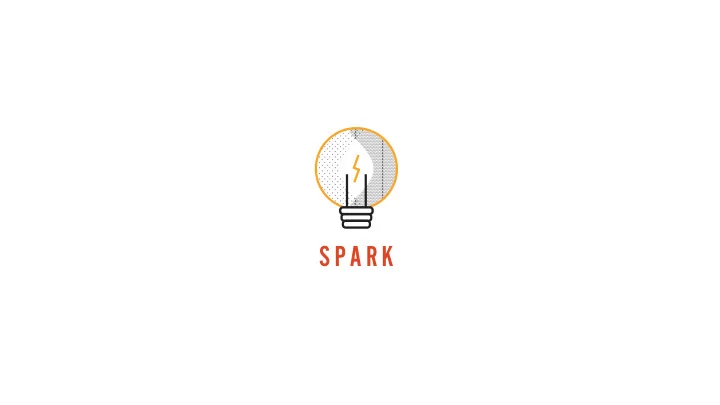

SPARK
@SPARKIAPD
ARDUINO BASICS
WHAT IS AN ARDUINO? Digital input and output Ground (PWM items) MICROCONTROLLER + makes it easy to recieve inputs and create outputs + it is a computer – has a CPU - can load information from somewhere else Ground – has RAM - can store variables – has input and output devices Power supply to Arduino board Analog input and output 3.3V, 5V, Ground, and Vin
BREAK I T DOWN Digital input and output Ground (PWM items) GROUND + the “negative side” of power 3.3V & 5V + the “positive side” of power VIN + provides same voltage being supplied to Ground Arduino (if 9V battery is supplied - output will Power supply be 9V) to Arduino board * you may need resistors if what you are wiring to board cannot handle the voltage output* Analog input and output 3.3V, 5V, Ground, and Vin https://www.thinkabitlab.com/project/understanding-parts-arduino
BREAK I T DOWN Digital input and output Ground (PWM items) DIGITAL (PMW) + digital signals only have two states: 0 or 1, HIGH or LOW, on or off, etc. OUTPUT + pins with a “~” indicate ability to OUTPUT + pin is able to send data (like turning an LED Ground on or off) Power supply INPUT to Arduino board + pin is able to read data (like using a button) Analog input and output 3.3V, 5V, Ground, and Vin https://www.thinkabitlab.com/project/understanding-parts-arduino
BREAK I T DOWN Digital input and output Ground (PWM items) ANALOG + analog signals have many states + can read exact values - not only HIGH or LOW + pins used only for INPUT (reading) + used for sensors, knobs, and others Ground Power supply to Arduino board Analog input and output 3.3V, 5V, Ground, and Vin https://www.thinkabitlab.com/project/understanding-parts-arduino
BREAK I T DOWN Digital input and output Ground (PWM items) POWER SUPPLY + can connect a battery pack + can connect a USB cable – supplies power to board and is how code is sent + operating voltage of board is 5V Ground – can handle 6 - 20V Power supply to Arduino board Analog input and output 3.3V, 5V, Ground, and Vin https://www.thinkabitlab.com/project/understanding-parts-arduino
ADDITIONAL HARDWARE OTHER + jumper wires + resistors + breadboard + battery attachments DIGITAL + LED lights + buttons + switches ANALOG + distance/range sensors + environmental sensors (sound, touch, temp, visual) + motion sensors + knobs/dials (like a volume or brightness adjuster) + so many more
IN T RO TO CODING BEFORE YOU BEGIN + you’ll need an arduino board – you can check one out from the IAPD office! – you can buy one online for about $25 + download the coding program from the Arduino website LETS GO! + how to navigate the program + connecting your board + writing the code + how to connect hardware to the board + uploading the code to the board Arduino USB cable Coding board program
Recommend
More recommend